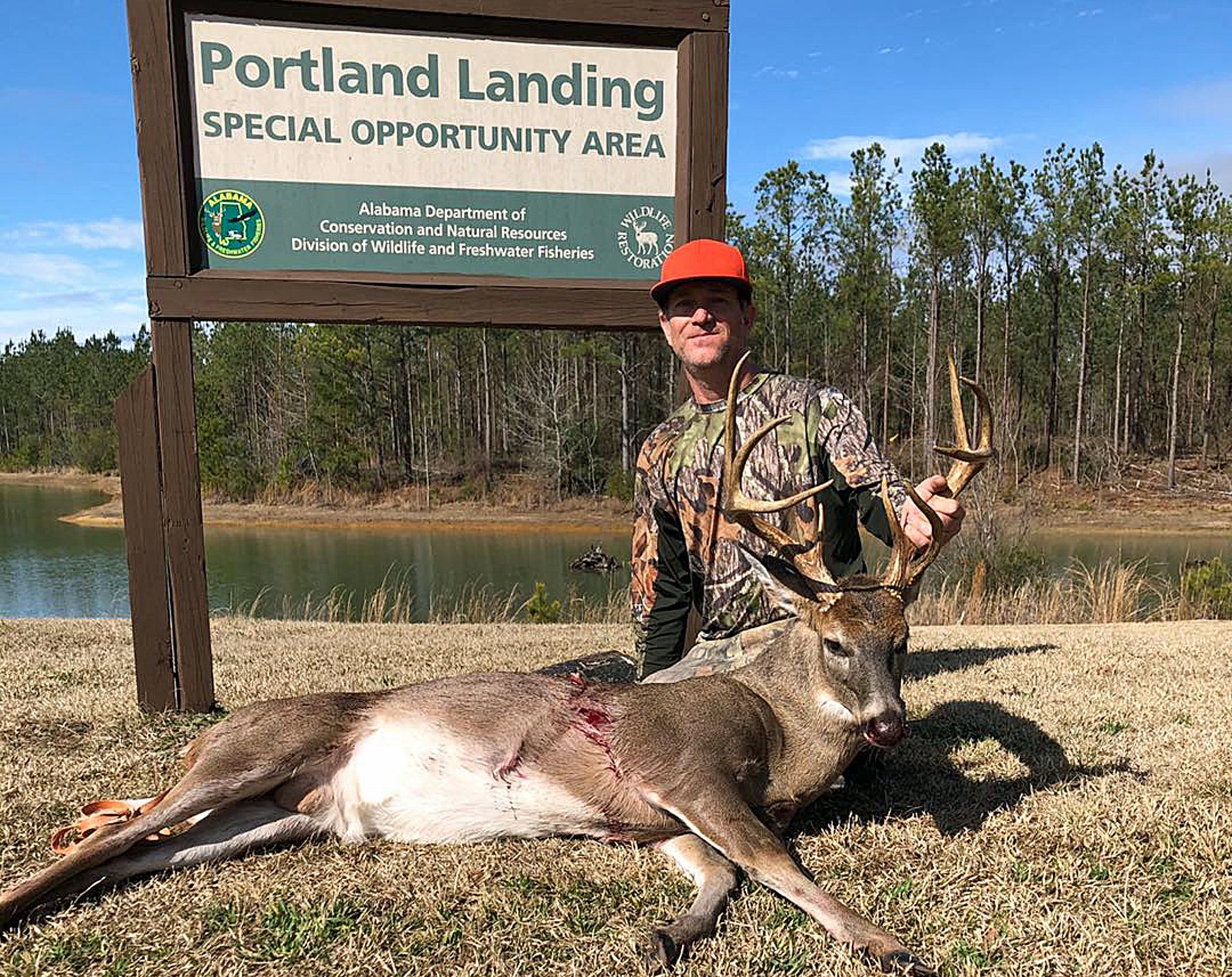By DAVID RAINER, Alabama Department of Conservation and Natural Resources
Judging from the number of deer reported through the Alabama Wildlife and Freshwater Fisheries (WFF) Division’s Game Check system and the number of trophy bucks posted on social media, Chris Cook thinks this is the best deer season our state has had in quite a while.
Cook, the WFF’s Deer Program Coordinator, said numerous factors are likely involved in the increase in harvest numbers as well as the quality of the bucks harvested.
Alabama’s three-buck limit has been in place for more than a decade, which could be one of the reasons for the big bucks, but Cook said that is difficult to quantify. Hunters are allowed to take one male deer (bare antlers visible above natural hairline) per day and three per hunter during all combined seasons. One of the three must have at least four antler points 1 inch or longer on one antler (except for Barbour County). A point is defined as an antler projection of at least 1 inch in length from base to tip. Main beam tip shall be counted as a point regardless of length. Barbour County requires all bucks to have at least three points on one side to be legal except during the statewide special youth season, when any antlered buck can be harvested.
“It’s hard to track and determine what you can attribute exactly to the three-buck limit because of the way data was collected before that,” Cook said. “We used the mail survey, and before the three-buck limit one of the questions was how many bucks you killed. If they killed 20, that’s what they put down. After the three-buck limit, nobody was going to put down they killed more than the limit.
“But I also think people started to be a little more selective. So we can’t attribute it to the three-buck limit or just a change in hunter attitude. It does appear hunters were willing to pass on yearling and 2-year-old bucks. A lot of clubs put in rules on buck harvest, so some of it was self-imposed.”
The number of trophy bucks taken in Alabama this year has been impressive. Huge bucks pop up on social media daily. Cook thinks the ease of posting photos on social media could possibly be skewing the impression of a banner season.
“With increased use of social media, everybody wants to post a picture of what they’ve killed, so everybody else sees what they’ve done,” he said. “In the past, somebody had to take a picture, get the film developed and send the picture to you.
“But it definitely seems that a lot more really good bucks were taken this year. Our Game Check numbers show that people are reporting way more deer than they ever have. They’re killing more deer, and a percentage of bucks reported have been really good deer.”
Cook said the change in the possession regulations has likely increased the Game Check compliance. After a deer is harvested, it must be reported by the hunter through Game Check before it can be transferred to an individual, processor or taxidermist. Whoever is in possession of all or part of a deer or turkey that is not their own must retain written documentation with the name of the hunter, the hunter’s Conservation ID number, the date of the harvest and Game Check confirmation number. The information can be documented on a piece of paper, or on a transfer of possession certificate available in the Alabama Hunting & Fishing Digest or online at outdooralabama.com. WFF also reactivated its toll free Game Check phone number, 1-800-888-7690, to make it easier for those without smartphones or internet access.
“You look at this season’s significant increase in Game Check numbers, and you have to wonder what our phone survey is going to tell us,” he said of the survey that had previously been done by mail. “If the survey numbers track along with the Game Check numbers like they have in previous years, I suspect we’ll see a pretty good increase in numbers from the phone survey.”








